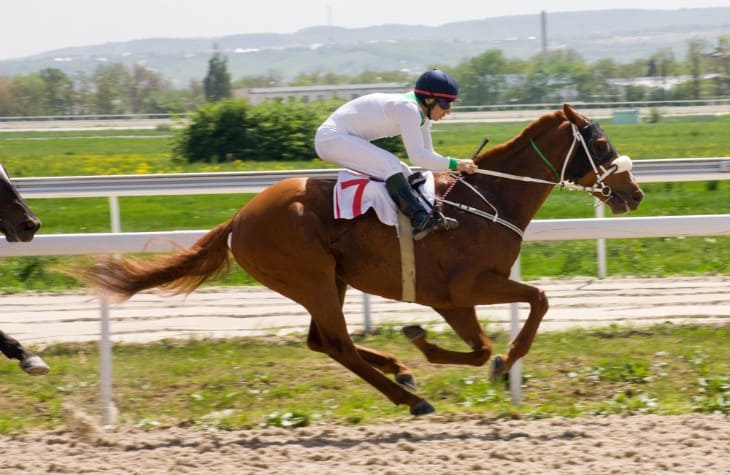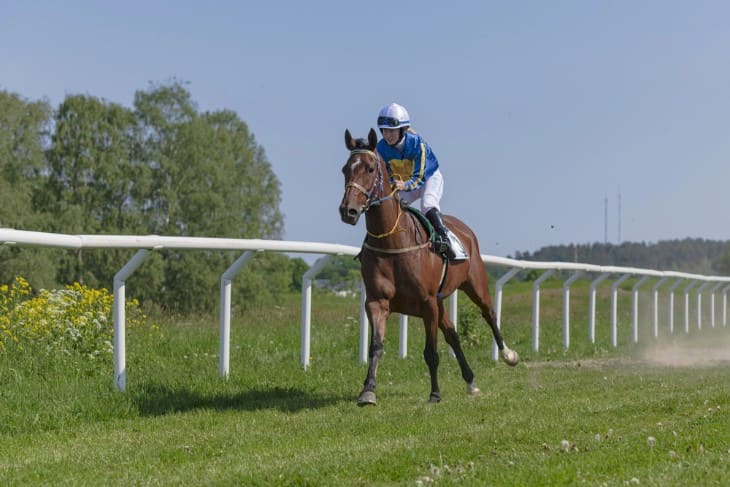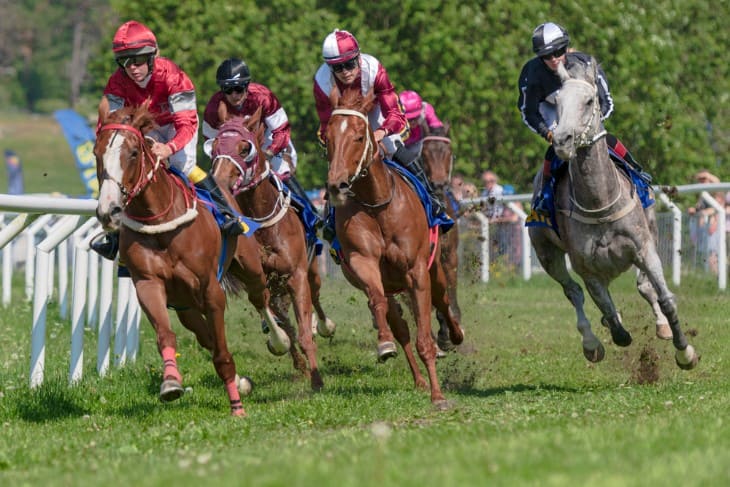- The Criteria for Greatness in Racehorses
- Iconic Horses of the Early 20th Century
- Secretariat: A Benchmark in Racing History
- Comparing Different Eras: A Complex Challenge
- The Impact of Breeding on Racing Excellence
- Modern Racing Phenomena: A New Breed of Legends
- Global Racing Circuits: Diverse Challenges for Equine Athletes
- Advances in Veterinary Science and Horse Care
- Conclusion
The Criteria for Greatness in Racehorses
Determining the criteria for what makes a racehorse great is a complex and often debated topic. Several factors are generally considered when evaluating the greatness of a thoroughbred:
- Race Record: The most immediate measure of a horse's success is its race record. This includes the number of races won, the significance of these races, and the consistency of performances. Horses that have won major, prestigious races like the Kentucky Derby or the Grand National are often remembered for their achievements.
- Longevity and Consistency: A horse's ability to perform consistently at a high level over several seasons is a strong indicator of greatness. Longevity in racing is a rare and highly valued attribute, showcasing not just physical prowess but also resilience.
- Impact on the Sport: Some horses leave a lasting impact on the sport, either by achieving extraordinary feats, setting new records, or changing the way people perceive racing.
- Breeding Influence: A great racehorse often becomes a significant breeding asset, passing on desirable traits to future generations. The influence of a horse in the breeding world can be a testament to its greatness.
In addition to these factors, intangible qualities like a horse's fighting spirit, its ability to overcome adversity, and the connection it establishes with the audience also contribute to its legacy. Great racehorses become legends not just through their achievements on the track but also through the stories, emotions, and memories they leave behind.
Iconic Horses of the Early 20th Century
The early 20th century witnessed the emergence of several iconic racehorses, each leaving an indelible mark on the sport. One such legend was Man o' War, an American thoroughbred who dominated racing in the post-World War I era. His overwhelming success on the racetrack, winning 20 out of 21 races, set a new standard for excellence. Another notable name from this period is Phar Lap, a New Zealand-bred horse who became a racing sensation in Australia during the early 1930s. Phar Lap's extraordinary ability to win consistently, even under challenging conditions, endeared him to the public during the Great Depression, making him a symbol of hope and resilience.
In Britain, horses like Hyperion, who raced in the 1930s, became household names. Hyperion's notable victories in races such as the Epsom Derby and the St Leger Stakes solidified his reputation as one of the greatest British racehorses of the era. These early legends set high benchmarks in racing and became yardsticks against which future generations of racehorses would be measured. Their stories, often intertwined with historical events of their time, added a rich narrative to the tapestry of horse racing history.
Secretariat: A Benchmark in Racing History
Secretariat, an American thoroughbred that raced in the early 1970s, is often heralded as one of the greatest racehorses of all time. His achievements on the track were nothing short of spectacular, most notably his Triple Crown victory in 1973. Secretariat broke records in each of the three races – the Kentucky Derby, the Preakness Stakes, and the Belmont Stakes – setting a standard that remains unmatched. His Belmont Stakes victory, where he won by an astonishing 31 lengths, is still considered one of the greatest performances in horse racing history.
Secretariat's impact on the sport extended beyond his racing career. His charismatic presence and remarkable performances captured the public's imagination, leading to increased interest and investment in horse racing. Furthermore, his success as a breeding stallion helped to shape future generations of racehorses. Secretariat's legacy is a testament to the extraordinary potential of thoroughbred horses and serves as a benchmark for equine greatness in the world of horse racing.

Comparing Different Eras: A Complex Challenge
Comparing racehorses from different eras is a task fraught with complexity. The evolution of the sport, changes in training methods, advancements in veterinary care, and even alterations in racecourse surfaces have all played a role in shaping the capabilities of racehorses over time. In the early days of racing, horses competed on natural turf under varying conditions, whereas modern tracks often utilise synthetic or meticulously maintained turf, potentially affecting race speeds and outcomes. Additionally, the breeding practices have evolved, with a greater understanding of genetics leading to more refined breeding strategies aimed at producing superior racehorses.
Another significant factor is the variation in race formats and distances. Historical races often had different formats and distances compared to contemporary races. This evolution makes it challenging to directly compare the achievements of horses from different times. For instance, a horse that excelled in short sprints in the early 1900s might not necessarily be comparable to a modern-day long-distance champion. Therefore, when evaluating greatness across different eras, it is essential to consider the context of each horse’s achievements within the norms and conditions of its time.
The Impact of Breeding on Racing Excellence
The science of breeding has been pivotal in the development of racing horses. Selective breeding involves choosing horses with desirable traits to produce offspring that inherit these qualities, enhancing the chances of racing success. Key factors considered in breeding include:
- Speed and Stamina: Breeders often look for a balance between speed and stamina, ensuring horses can maintain their pace over varying distances.
- Physical Conformation: The physical build of a horse, including bone structure, muscle composition, and overall body balance, is crucial. A well-conformed horse is more likely to withstand the rigours of racing.
- Pedigree Analysis: Examining a horse’s lineage provides insights into its potential abilities. Breeders often study the success of a horse’s ancestors to predict its performance.
The impact of breeding on racing excellence is evident in the emergence of certain bloodlines that have consistently produced high-calibre racehorses. For example, the bloodline of Northern Dancer, a Canadian-bred racehorse, has been influential in producing numerous champions. Advances in genetic research and technology are further refining the breeding process, allowing for more precise selection and potentially leading to even greater achievements in the sport. The continued focus on breeding underscores its critical role in shaping the future of horse racing.
Modern Racing Phenomena: A New Breed of Legends
The contemporary era of horse racing has witnessed the rise of new legends, demonstrating exceptional prowess on the track. These modern champions, thanks to advancements in breeding, training, and racing technology, have set new standards in the sport. One such example is the British racehorse Frankel, unbeaten in his racing career and widely considered one of the greatest racehorses of all time. His extraordinary speed and ability to maintain it over various distances set him apart from his contemporaries. In the United States, American Pharoah captured the public's imagination by winning the Triple Crown in 2015, the first to do so in 37 years, followed by Justify in 2018, showcasing the continued potential for extraordinary achievement in the sport.
Another aspect of modern racing phenomena is the increasing internationalisation of the sport. Prestigious races such as the Dubai World Cup, the Prix de l'Arc de Triomphe in France, and the Melbourne Cup in Australia attract top talent from around the globe, making horse racing a truly international affair. This globalisation has led to a cross-pollination of breeding and training techniques, further elevating the level of competition and the quality of racehorses worldwide.

Global Racing Circuits: Diverse Challenges for Equine Athletes
Global racing circuits present diverse challenges for equine athletes, testing their versatility and adaptability. The nature of the racetrack, the climate, and the competition vary significantly across different countries and continents, influencing race outcomes. Key aspects of these global circuits include:
- Track Surfaces: Racetracks around the world feature different surfaces, from dirt and turf to synthetic. Each surface presents unique challenges, with some horses showing a distinct preference for a particular type.
- Climate Conditions: Horses must adapt to varying weather conditions, from the dry heat of the Middle East to the often damp and cool European climates. This adaptability is a testament to their conditioning and resilience.
These international races also provide opportunities for horses to prove their mettle against a diverse field of competitors. Winning prestigious international races enhances a horse's reputation and cements its status as a world-class athlete. Additionally, these events offer significant financial rewards and have become major attractions in the global sporting calendar. The participation of top horses and jockeys from different countries in these events highlights the universal appeal of horse racing and its status as a sport that transcends national boundaries.
Advances in Veterinary Science and Horse Care
The field of veterinary science has made significant strides in improving the health and performance of racehorses. Advancements in medical diagnostics, such as MRI and CT scans, have revolutionised the early detection and treatment of injuries, allowing for more effective and targeted interventions. This technology enables veterinarians to diagnose conditions that were previously undetectable, leading to better outcomes for the horses. Nutrition has also seen considerable progress, with specialised diets being formulated to meet the unique needs of racehorses. These diets are designed to optimise performance, enhance recovery, and maintain overall health.
Another important area is the development of better care practices, focusing on the welfare of the horse. Practices such as regular dental checks, hoof care, and massage therapies are now commonplace, ensuring that horses are not only physically fit but also mentally healthy. The growing awareness of the importance of mental well-being in horses has led to changes in training and stabling practices, aimed at reducing stress and enhancing the quality of life for these equine athletes. These advances in veterinary science and horse care have not only improved the performance of racehorses but also extended their racing careers and overall lifespan.
Conclusion
In concluding, the debate over the greatest racehorse of all time remains as compelling and unresolved as ever. This discourse spans across various eras, each marked by its champions and racing conditions. The comparison of horses like Man o' War, Secretariat, and Frankel, though intriguing, is inherently challenging due to the changes in racing environments, breeding techniques, and training methods over time. Each of these legends excelled in their respective eras, setting benchmarks and captivating audiences with their exceptional talents.
For more information:








